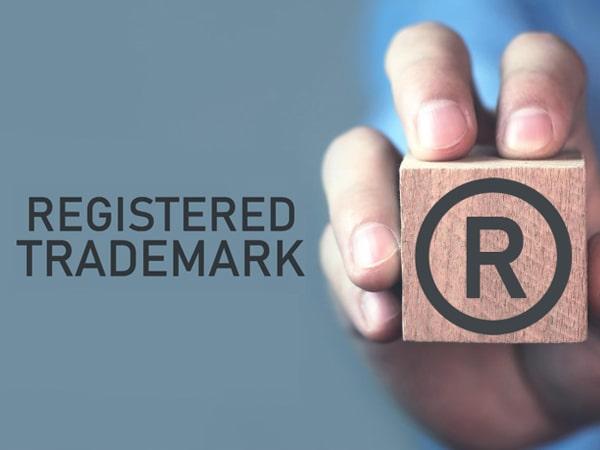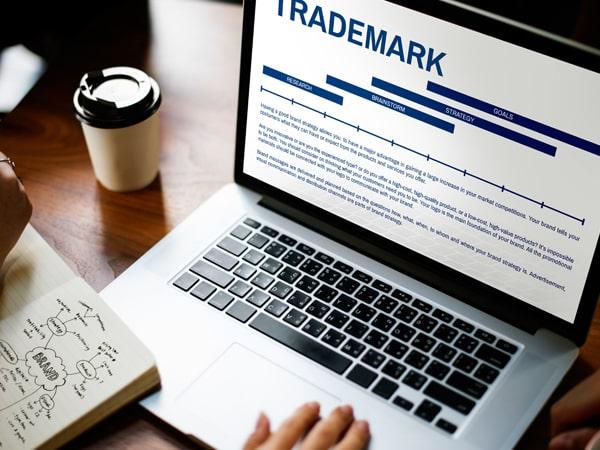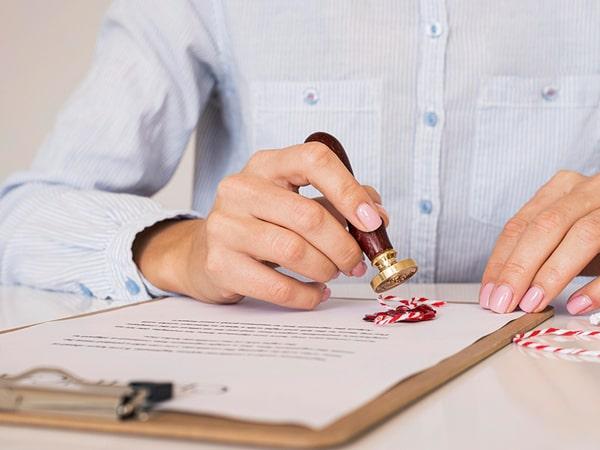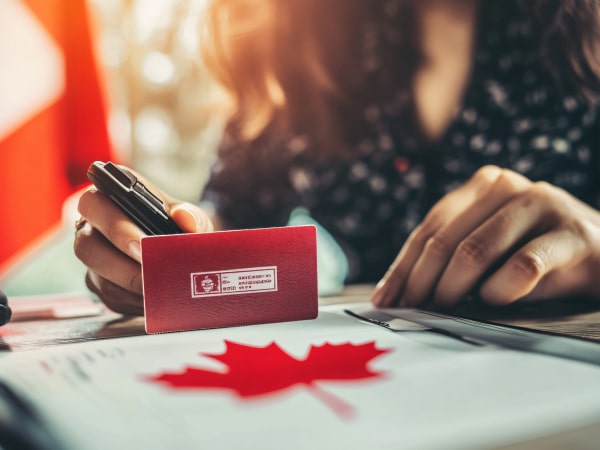Table of contents
- What is a trademark?
- Why is a trademark important for business?
- What are the benefits of registering a trademark?
- How long does the trademark registration process take?
- How much does a trademark cost for your business?
- What are the requirements for registering a trademark in the UK?
- How to trademark a name in the UK
- Checking company trade names in the trademark registry database
- Trademark protection and renewal
- Trademark registration FAQs
What is a trademark?
The trademark is a designation that serves to distinguish the goods and services of one producer or renderer from the same or related goods and services of others. Such a designation should be registered by the Patent and Trademark Office. which has undergone the procedure established by law for registration as a trademark. Distinctiveness is essential for the designation that is submitted for registration.
Why is a trademark important for business?
A trademark helps protect your brand from being sued by others who use similar assets. You can’t trademark something that isn’t unique or original. That’s why it’s crucial to give your product or service a distinguishing feature that rivals won’t be able to replicate.
Quickly select a jurisdiction and register your company anywhere in the world online

What are the benefits of registering a trademark?
It is expedient for every business to take care of proper protection of intellectual property rights for brand name and logo. It is important to take care of IP protection on time since it may cause difficulties in proving the fact that the rights to this object of intellectual property belong to the company that developed it.
Also, there is a high probability of legal dispute in case the intellectual property rights are not protected in due course. Such a legal dispute is possible not only with competitors but also between the founders of the project themselves.
It is also important to consider that the same product or business name can be protected in different ways. For example, as an object of copyright and as a trademark. Yet, involving a professional legal team is important to choosing a reliable and appropriate way to register a brand.
Registering a trademark helps protect your own rights and interests. The rightsholder will receive effective tools to enforce his rights against infringement. These tools can be used as a counteraction against illegal use of his brand name and logo. The TM registration also provides an opportunity for the rightsholder to file a lawsuit against the infringer. In order to protect his rights TM owner is also entitled to appeal to the police and other law enforcement agencies.
The TM registration can provide extra protection for domain names. Namely, against cybersquatting, which is the practice of registering a domain name that is similar to a trademark in bad faith. Cybersquatters intends to make a profit on the trademark owner’s reputation. TM registration helps the owner to demonstrate that he has a legitimate interest in the domain name. It also helps the owner to show his ability to take legal action to protect his rights.
Registering a trademark enables a much smoother process of takedowns facilitating. It applies to major website retailers such as Amazon, Facebook, or the Apple Store. If another party makes a listing or post that directly infringes on your brand or business, contacting the marketplace and producing the trademark registration often results in a smooth, painless removal of the infringing material.
The proper trademarking of your business name protects the rights of its developers. It also increases the attractiveness of the project to its potential investors.
How long does the trademark registration process take?
The smooth procedure is about 4-6 mois. It starts from the file of a trademark application to the Intellectual Property Office of the United Kingdom. The process is finished when the IPO takes the decision on your trademark application. This term can be longer in case your trademark application will be opposed or objected.
How much does a trademark cost for your business?
The cost of filing a trademark application in the UK depends on the number of classes for which the designation is being registered. The cost of the application in one class for a single trademark costs 200 GBP. This cost can be reduced to 170 GBP in case of submission of an application via online service of UK IPO) and 50 GBP for each additional class.
You should pay 50 GBP for each additional version of your designation. This is applicable in case you want to register a series applications for a few versions of your trademark.
Have questions? Contactez-nous!
*Vos coordonnées seront utilisées à nos fins internes et uniquement dans le but de vous fournir les meilleures solutions commerciales..
What are the requirements for registering a trademark in the UK?
Registrable trademarks are signs that are distinctive of the goods and/or services that the application covers. They should be capable of being represented clearly and precisely.
The following can be registered as a trademark:
- words;
- names;
- acronyms;
- letters;
- numbers;
- devices;
- holograms;
- moving images;
- colors;
- color combinations;
- patterns;
- the three-dimensional shape of a product or its packaging;
- sound marks;
- and any combination of the mentioned signs.
The following trademark types are registrable:
- trademarks;
- service marks;
- collective marks;
- certification marks.
How to trademark a name in the UK
Checking company trade names in the trademark registry database
You can check your designation in the UK IPO trademark register database for identical trademarks. It can be found at the following link https://www.gov.uk/search-for-trademark. Still, in order to avoid objections or opposition we advise you to make a preliminary search for similar trademarks. It should be made through a qualified lawyer or patent attorney.
Define your trademark
The first step is to draft the UK trademark application. At this stage, the trademark design should be considered. It is important that the designation you choose should be unique. In this case, it will be able to help the consumers distinguish your goods and services from the goods and services from another producer or renderer. In case this requirement is not met your trademark can be objected to or opposed by the examiner or by the third party. In the event that you have used the identical or similar designation to the registered trademark of another producer or renderer, it can be assumed as an infringement that can entail legal actions against you and your company.
Choose the class of goods or services for which the mark will be used
It should be noted that the list of goods and services should be drawn up in accordance with the current edition of the Nice Classification of Goods and Services which is 12 as of August 2023. Also, the list of goods and services should correspond to the field of activity of the company. We advise you to carefully and responsibly approach the formation of a list of goods and services for your trademark, since the omission of one or another element of your activity when compiling a list of goods and services may entail additional costs for your business.
When you apply you must select at least one class and one term for your trademark. These relate to the goods or services that you plan to use your trademark on.
A class covers a general category of goods or services, while a term is more specific. For example, class 25 covers clothing. It then includes terms that depend on the use or material of the clothes, such as sports clothing or knitwear.
Your trademark will only be protected in the classes and terms you select.
You can choose more than one class or term but you should only choose ones relevant to your business plans for the next 5 years. The more terms you choose, the more likely it is that your trademark will be similar to someone else’s.
You cannot add more terms to your application after you send it. It should also be understood that an unreasonable excess of the number of goods and services will lead to an increase in the cost of a trademark application, which is also inexpedient.

Review the application and issue a certificate
A power of attorney is not necessary for the representation of non-residents in the United Kingdom. Domestic registration is not necessary for them as well.
The application process includes an examination on absolute grounds. It means that the Examiner checks the application for compliance with the provisions of the law and the formal requirements for the application, namely, the presence of all the necessary data in the application and the payment of an official fee for consideration of the application and registration of a trademark.
Signs not deemed distinctive can be accepted for publication if there is evidence that sufficient distinctiveness has been acquired through use.
In case your trademark is not unique or distinctive enough, the Examiner can decide that your trademark and your goods and services are similar to the earlier registered/applied trademarks and their goods and services and therefore the public is likely to confuse your trademark with the earlier trademarks. In this case, he will be obliged to inform the owners of such trademarks, that your application will be published in the online Trade Marks Journal and anyone can oppose your application should they have grounds to do so.
The deadline for filing an opposition is 2 months from the publication date of a trademark application in the Trade Marks Journal. This period can be extended for a further month, as of right. To do so, an interested party must file a Form TM7a, Notice of Threatened Opposition, during the initial two-month opposition period.
As we indicated above, the processing time from filing to registration is approximately 4 to 6 mois. The examination report is issued within approximately 40 jours.
Trademark protection and renewal
Registration provides protection for the trademark in the United Kingdom of Great Britain and Northern Ireland and automatically extends to the British Indian Ocean Territory, the Falkland Islands, the Isle of Man, South Georgia, and the Sandwich Islands. In the Bahamas, subject to locally acquired prior rights, the owner of a UK trademark is entitled to registration by producing a UK registration certificate.
The registered trademark is valid for 10 years from the application date. It is also subject to renewal every 10 years. The application for the renewal should be filed 6 months before its expiry date. It is also possible to renew the trademark within 6 months after its expiration date for an additional fee (grace period).
The trademarks are not subject to renewal after the expiration of the grace period.
Trademark registration FAQs
Do I need to register a trademark?
It is not obligatory for anyone to register as a trademark label, logo, or even a business name. Still, it should be noted that trademark registration provides the trademark owner with an exclusive right to use the mark with respect to the goods and services covered by the registration. This means that no one else can use the same or a similar mark in a way that is likely to cause confusion or deception among consumers.
How long are trademarks valid in the UK?
The registered trademark is valid for 10 years from the application date. It is also subject to renewal every 10 years.
What cannot be registered as a trademark in the UK?
It is obvious that legal protection cannot be granted to any mark that may be considered by the consumers as confusingly similar to a mark already in use. It is strongly recommended before the submission of a trademark application, to complete a comprehensive trademark search to be sure your mark does not already exist and does not violate the rights of third parties. Generic or descriptive words are also not subject to legal protection as a trademark in the United Kingdom. For example, a yogurt called “Creamy Yogurt” cannot be approved by UK IPO. Since there is no way to keep others from describing a yogurt as ‘creamy. Surnames are considered descriptive, and though it is possible to trademark a surname. Kindly note that the process is much more challenging. It could take years of documentation to prove that the name represents your business. It is also obvious that obscene words and symbols cannot be approved by UK IPO as well as immoral or scandalous words or symbols.
When do I have to register my company name?
When is the proper time for registering a trade mark? The answer is simple – as soon as possible in order to prevent others from using your trademark, a business name in the UK.
Can I register my trademark myself or do I need specialist help?
The lawyer’s or a trademark attorney’s services offer several advantages to ease the process. These benefits stem from the attorney’s extensive experience and expertise in trademark matters. While the registration procedure may not initially appear intricate, Having a proficient attorney by your side can prove invaluable in guiding you through the intricacies of the registration process.
A lawyer or a trademark attorney can provide you with the following help:
- Conduct a thorough search for existing trademarks that might hinder the registration or usage of your own mark in commerce.
- Interpret the outcomes of these searches and offer guidance on the best course of action.
- Assess the potency of your proposed trademark and aid in its strategic development.
- Clarify your entitlements about the registered mark and provide guidance on pursuing actions against infringements.
- Prepare and submit the trademark application, and if necessary, make amendments throughout the process.
- Monitor the progress of your application, meet deadlines, ascertain its status, and respond to any subsequent inquiries.
And last but not least. A lawyer or a trademark attorney can significantly enhance your trademark registration journey. Leveraging their expertise to navigate potential challenges and ensure a smoother process overall.













